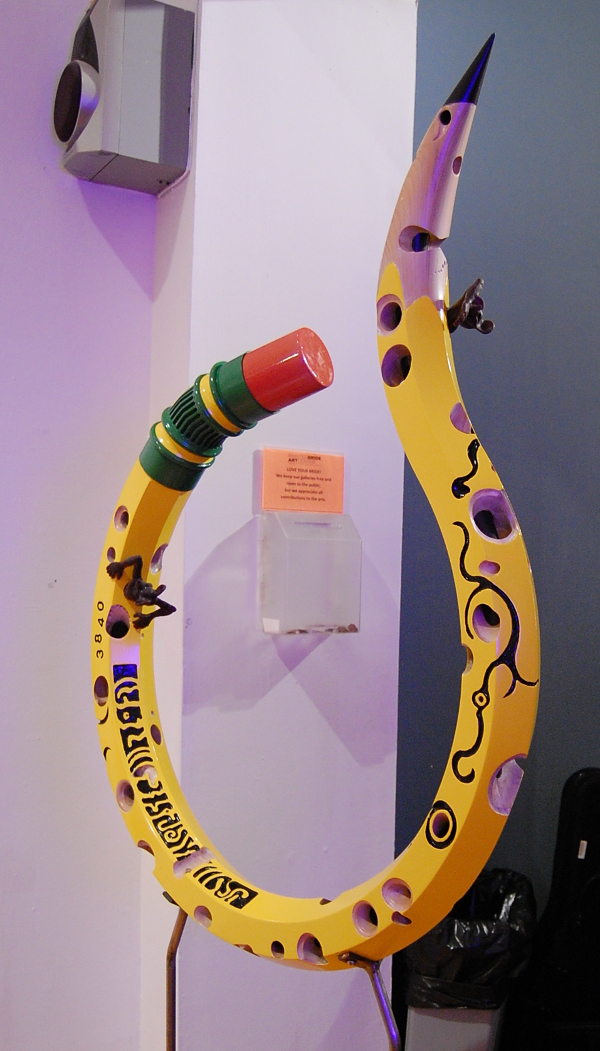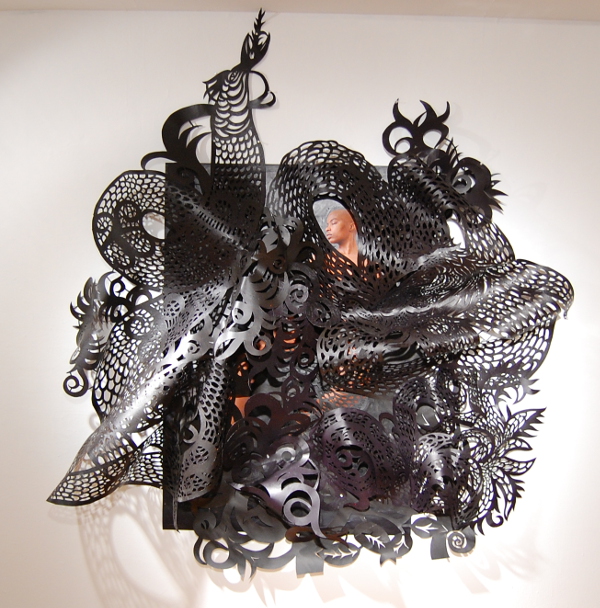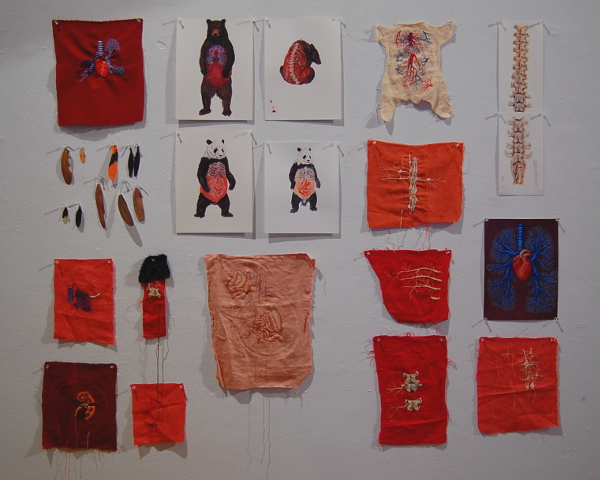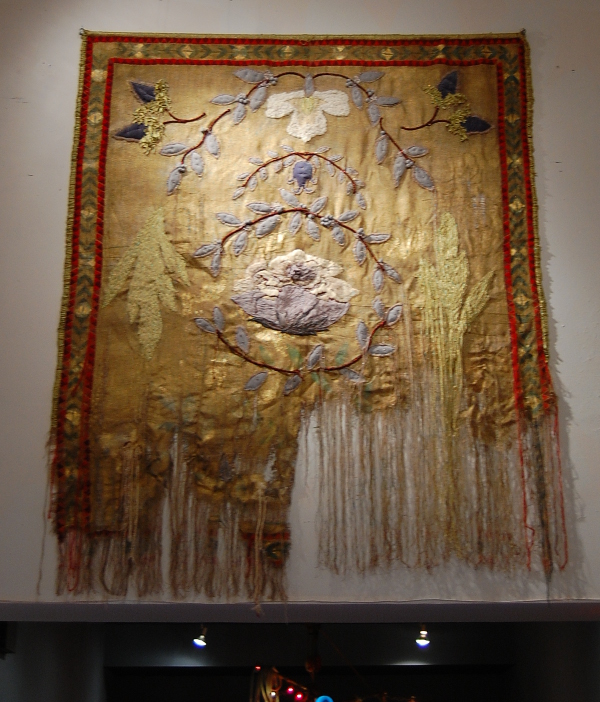
Painted Bride’s creative cacophony between reason and emotion
Culling its name from the two sons of Zeus – Apollo and Dionysus – who are allegorically intended to represent reason and chaos or emotion respectively, the current multi-artist show at the Painted Bride Art Center is alive with artwork that digs into the psyche in order to discover how and why we make what we do. With any creative process, there is some degree criticism, scrutiny and struggle. In “Apollonian/Dionysian: The Constraints of Freedom” curated by Paul Santoleri, the psychology of the desire to create and communicate is itself put beneath the proverbial lens.
One of the most remarkable pieces in the show also resides right near the front of the gallery. The twisting, incomplete circle of “Swiss Cheese” by Steve Garr prompts an equally distorted mindset from the start. Its narrow yellow form is indeed pocked with holes, and even tiny, black mouse-like creatures, but it is no dairy product–it’s a No. 2 pencil. While the telltale features (hexagonal shape, pink eraser in a metallic green cylinder and dark graphite point) are all present and accounted for, the writing implement is rendered all but useless, curved to where the tip and the eraser nearly meet; a negation of all it could and should be. Perhaps the gaping holes in its cheese-colored surface and occupied by diabolical rodents are crafted to comment on self-doubt or pestering vices, but the rounded tool seems intent on wiping out anything it could conceivably write. From here, we are forced to decipher its context from the expunged remnants of meaning as the Ouroboros feasts on itself continually.
Henry Bermudez, “Kelicia’s Dream.”
At the back of the second floor, we find the bookend to Garr’s sculpture in the cut paper relief “Kelicia’s Dream” by Henry Bermudez. The forms that flow out from the rectangular wall hanging dominate the surrounding space and demand attention to their glossy, black patterns. In the fray we find scales or feathers from some type of dragon or a phoenix as it curls skyward, breathing a tongue of fire straight up away from the action. Despite the apparent terror and confusion, one curl of the serpent’s body bends enough to reveal the shaved head of a woman, her eyes closed peacefully. She seems unfathomably calm in the midst of such a tussle, even if the writhing mass before her is really just all in her head. This image is wrought with such sharp anxiety that the fortitude of the woman’s tranquility is both an inspiration and an anomaly.
Deborah Simon, “Embroidery for the Bears.”
Deborah Simon takes looking inward quite literally by dissecting a few different species of bears across a swath of wall space in “Embroidery for the Bears.” Representing life is one of the most ancient art forms found in the etchings of caves that date to the dawn of symbolism. By presenting realistic organs and bone structure, as well as bear exteriors as a point of reference, Simon utilizes both paint and embroidered fabric to present bears of different species, in varying stances, and through circulatory systems, nerves and bones that, without the external cues, could belong to practically any large mammal. By breaking a whole into its distinct parts, we see more fully what a ‘bear’ might actually be.
Beth Clevenstine, “Fluffy Guilt.”
Upon exiting, Beth Clevenstine’s “Fluffy Guilt” is at its most ominous. The tapestry hangs far above much of the show, its golden weaving and plantlike patterns bordered a pair of deep crimson lines. Where most frames would fully enclose a work, these come to an end toward the bottom… but so too do the branches and leaves of the central image. Frayed strands and worn looking bits of fabric dangle limply below, as if the carpet-like image were either never finished, or somehow partly deteriorated. What is left is a remorseful or incomplete feeling as if wracked with the guilt from a personal action or inaction. Artists may often struggle with finishing work or being content with a final product, and Clevenstine provides a visceral example of these nagging ideas. As the golden threads unravel, so should our doubts. Even in this condition, the work is quite lovely, proving that even a vision we deem to be incomplete can harbor its own beauty.
There are more than 20 artists displaying work in “Apollonian/Dionysian: The Constraints of Freedom.” The exhibit will be up through November 8.
Painted Bride Art Center is located at 230 Vine St., Philadelphia; [email protected]; paintedbride.org.
Recent Content
-
Artsarticle ·
-
Artsarticle ·
-
Artsarticle ·




